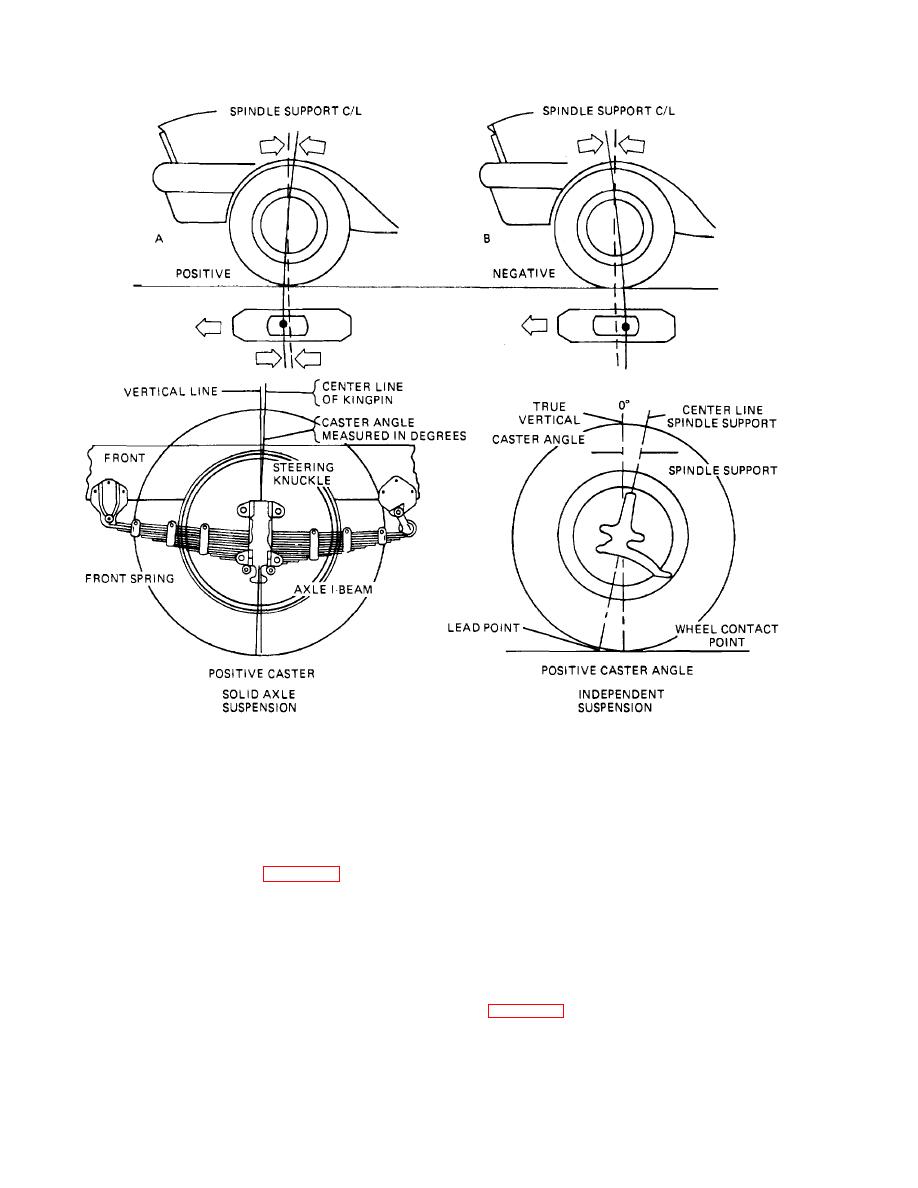
| Tweet |

Custom Search
|
|

|
||
 TM 9-8000
Figure 33-21. Caster Angle
extended, It must strike the ground ahead or behind the
bearings, zero camber would be ideal; but It Is not
point where the tire meets the ground. The caster varies
practical to build front axles with zero camber because of
from about 1/2 to 3 degrees.
the possible accumulation of bearing clearances and the
slight deflection of the axle under the vehicle load.
Therefore, a camber of about 1 degree Is recommended
at present. Excessive camber causes continual slippage
made by the wheel with the vertical axis when It is In the
of the tire on the road, because each wheel tries to follow
straight ahead position. Positive cambered wheels are
a path away from that traveled by the vehicle. This is due
closer together at the bottom than they are at the top. For
to the fact that a cambered wheel tends to roll like a cone
many years, front-wheel camber as great as 3 degrees
because Its axis Is not horizontal.
has been used. For driving on crowned roads, this
camber permitted better roiling contact by bringing the
33-20. Kingpin Inclination. King pin, or pivot, Inclination
wheel perpendicular to the road and made steering
easier. In recent years, the construction of graded roads
and the use of low-pressure fires has led to a decrease
knuckle pivots are tilted sideways toward the center of
In camber. If the vehicle were run on a flat road and had
the
vehicle.
Inclination
of
the
TA2338'50
no
lost
motion
at
the
33-18
|
||
 |
||